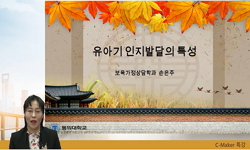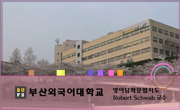[Purpose] The purpose of this study was to investigate the effects of chocolate milk intake following high-intensity running and cryotherapy on blood lactate, heart rate variability, cognitive function, and physical performance. [Methods] A total of ...
http://chineseinput.net/에서 pinyin(병음)방식으로 중국어를 변환할 수 있습니다.
변환된 중국어를 복사하여 사용하시면 됩니다.
- 中文 을 입력하시려면 zhongwen을 입력하시고 space를누르시면됩니다.
- 北京 을 입력하시려면 beijing을 입력하시고 space를 누르시면 됩니다.
일회성 고강도 달리기 운동과 극저온 냉각 처치 후의 초콜릿 우유 섭취가 혈중 젖산, 심박변이도, 인지적 기능 및 운동 수행능력에 미치는 영향 = Effects of chocolate milk intake following a single bout of high-intensity running and cryotherapy on blood lactate, heart rate variability, cognitive function and physical performance
한글로보기부가정보
다국어 초록 (Multilingual Abstract)
[Methods] A total of 30 recreational soccer players were assigned to cryotherapy and water group (CON) (n=10), cryotherapy and carbohydrate group (CRCHO) (n=10), cryothearpy and chocolate milk (CRCM) (n=10). As for the procedure of the experiment, each group performed high-intenstiy running (Ex1) and treated cryotherapy and ingested carbohydrate and carbohydrate+protein (Chocolate milk) immediately after running. Then, each group performed same running 2 hours later (Ex2). Blood lactate was measured at before and immediately after each running (Ex1, Ex2). Heart rate variability was measured before running, immediately after treatment, and 1 hour, 2 hours later. Cognitive function was measured before running, immediately after treament and 2 hours later. Physical performance such as cognitive agility test, squat jump were measured before running and 2 hours later after running.
[Results] In all three groups, blood lactate level was significantly increased after running (Ex1, Ex2). However, in CRCHO group, blood lactate increment after Ex2 was significantly lower than CON group. There was no significant difference between the three groups in root mean square of successive differences (RMSSD), high frequency (HF), the ratio of low frequency and high frequency (LF/HF) index which can measure the activity of the parasympathetic nervous system. However, the heart rate was significantly higher in CRCHO group compared to CON group. In cognitive function, there were no significant difference between the three groups, but all of the groups decreased significantly immediately after running (Ex1), and there was no significant difference at 2 hours after running. In physical performance, there was no significant difference between group and time.
[Conclusion] Carbohydrate intake after cryotherapy following a single bout of high-intensity running suppressed the increase of blood lactate concentration after the high-intensity running test. However, chocolate milk did not have a significant effect on improving blood lactate, heart rate variability, cognitive function, physical performance. It is expected that a clearer effect can be verified when further research is conducted by supplementing the deficiencies in this study.
[Purpose] The purpose of this study was to investigate the effects of chocolate milk intake following high-intensity running and cryotherapy on blood lactate, heart rate variability, cognitive function, and physical performance.
[Methods] A total of 30 recreational soccer players were assigned to cryotherapy and water group (CON) (n=10), cryotherapy and carbohydrate group (CRCHO) (n=10), cryothearpy and chocolate milk (CRCM) (n=10). As for the procedure of the experiment, each group performed high-intenstiy running (Ex1) and treated cryotherapy and ingested carbohydrate and carbohydrate+protein (Chocolate milk) immediately after running. Then, each group performed same running 2 hours later (Ex2). Blood lactate was measured at before and immediately after each running (Ex1, Ex2). Heart rate variability was measured before running, immediately after treatment, and 1 hour, 2 hours later. Cognitive function was measured before running, immediately after treament and 2 hours later. Physical performance such as cognitive agility test, squat jump were measured before running and 2 hours later after running.
[Results] In all three groups, blood lactate level was significantly increased after running (Ex1, Ex2). However, in CRCHO group, blood lactate increment after Ex2 was significantly lower than CON group. There was no significant difference between the three groups in root mean square of successive differences (RMSSD), high frequency (HF), the ratio of low frequency and high frequency (LF/HF) index which can measure the activity of the parasympathetic nervous system. However, the heart rate was significantly higher in CRCHO group compared to CON group. In cognitive function, there were no significant difference between the three groups, but all of the groups decreased significantly immediately after running (Ex1), and there was no significant difference at 2 hours after running. In physical performance, there was no significant difference between group and time.
[Conclusion] Carbohydrate intake after cryotherapy following a single bout of high-intensity running suppressed the increase of blood lactate concentration after the high-intensity running test. However, chocolate milk did not have a significant effect on improving blood lactate, heart rate variability, cognitive function, physical performance. It is expected that a clearer effect can be verified when further research is conducted by supplementing the deficiencies in this study.
목차 (Table of Contents)
- 목 차
- Ⅰ. 서론 1
- 1. 연구의 필요성 1
- 목 차
- Ⅰ. 서론 1
- 1. 연구의 필요성 1
- 2. 연구의 목적 6
- 3. 연구의 가설 7
- 4. 연구의 제한점 8
- Ⅱ. 이론적 배경 9
- 1. 고강도 운동 9
- 2. 극저온 냉각요법과 자율신경계 12
- 3. 영양 섭취 15
- 1) 탄수화물 섭취 15
- 2) 초콜릿 우유 섭취 17
- Ⅲ. 연구 방법 19
- 1. 연구대상 19
- 2. 실험 절차 21
- 3. 극저온 냉각 처치 24
- 4. 영양 처치 25
- 5. 측정 변인 27
- 1) 고막 온도와 주관적 감정 평가 27
- 2) 젖산 측정 28
- 3) 심박변이도 측정 28
- 4) 인지·민첩성 검사 30
- 5) 스쿼트 점프 31
- 6) 인지 검사 32
- 6. 자료처리 33
- Ⅲ. 연구결과 34
- Ⅴ. 논의 및 결론 51
- 참고문헌 58










